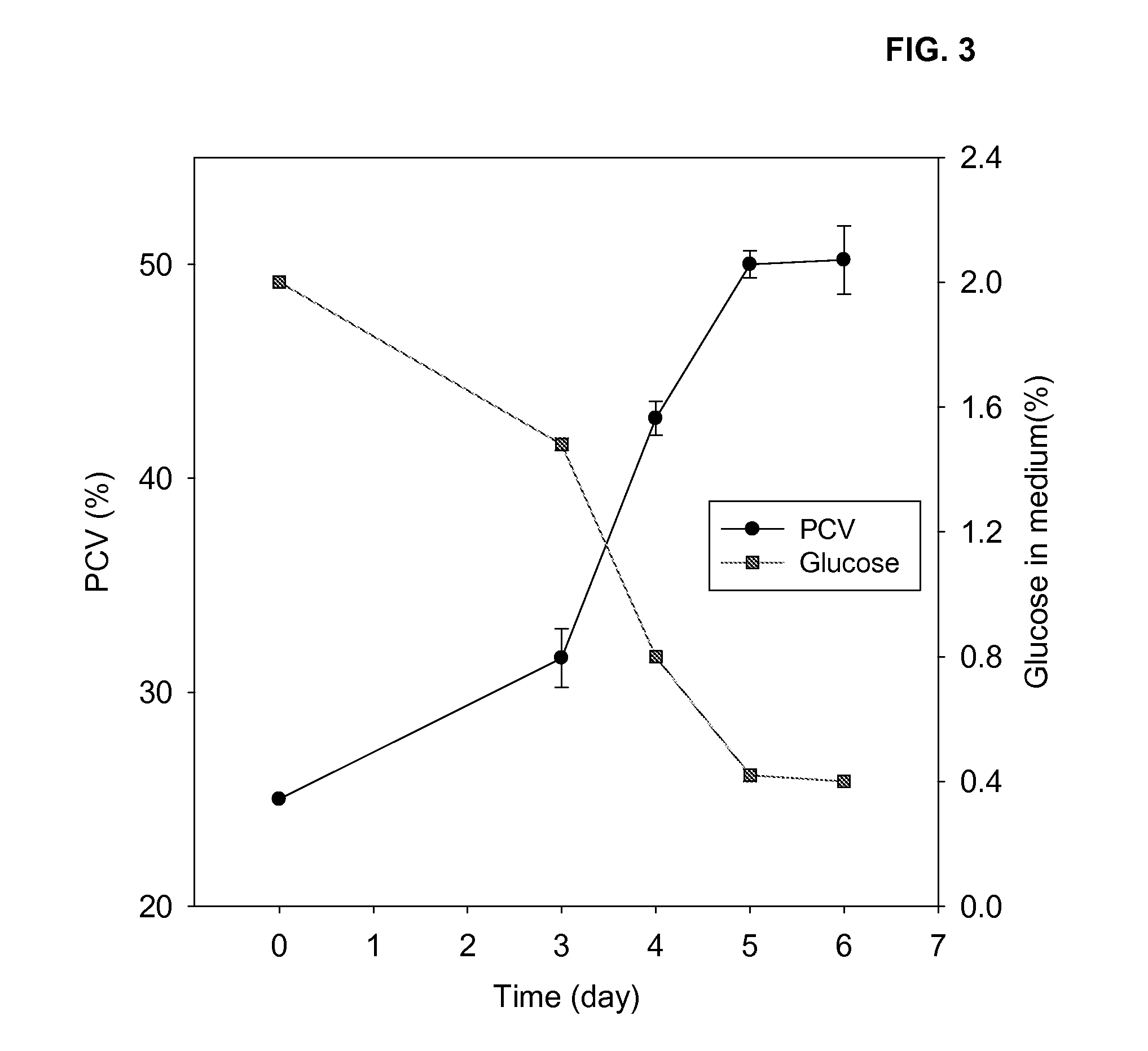Production and extraction of procyanidins from plant cell cultures
a technology of plant cell culture and procyanidin, which is applied in the direction of anti-noxious agents, drug compositions, cardiovascular disorders, etc., can solve the problems of limited plant growth range, difficult to preserve the polyphenol content of beans, and most of the polyphenols lost during processing of beans, so as to increase the production of these valuable compounds, reduce the loss of procyanidins, and high yield of procyanidins
- Summary
- Abstract
- Description
- Claims
- Application Information
AI Technical Summary
Benefits of technology
Problems solved by technology
Method used
Image
Examples
example 1
Theobroma cacao Callus Induction and Proliferation from Floral Tissue
[0097]Compact callus aggregates were established using full strength Driver and Kuniyuki walnut (DKW) medium augmented with auxin (2 mg / L 2,4-dichlorophenoxyacetic acid(2,4-D)), cytokinin (0.005 mg / L thisdiazuron (TDZ)) and the other supplements (250 mg / L L-glutamine, 100 mg / L myo-inositol) under controlled conditions using [D+]-glucose as the carbon source (Medium I in Table 1). The medium was sterilized by autoclaving after adjusting the pH to 5.8. Samples of Theobroma cacao immature flower materials were collected from a number of cultivated plants. To prevent contamination of the culture, the materials were surface-sterilized prior to introducing them to the culture medium. The material was first immersed in 1% (w / v) sodium hypochlorite for 20 minutes and gently agitated every 5 minutes. Under sterile conditions the material was decanted and rinsed three times with sterile deionized water and gently agitated du...
example 2
Theobroma cacao Callus Induction and Proliferation from Vegetative Tissue
[0099]Callus was established on Murashige and Skoog (MS) medium, supplemented with auxins (2 mg / L IAA and 4 mg / L IBA), cytokinins (0.005 mg / L TDZ), and L-Glutamine (250 mg / L) with Glucose (20 g / L) as the carbon source (Medium XXVII, Table 1). The medium was sterilized by autoclaving, after adjusting the pH to 5.8. Samples of Theobroma cacao vegetative material (young and mature leaves, nodes and internodes) was collected from a number of greenhouse grown plants. To prevent contamination of the culture, the materials were surface-sterilized prior to introducing them to the culture medium. The material was first immersed in 70% ethanol for 1 minute, followed by immersion in 25% bleach for 10 minutes and gently agitated every 5 minutes. Under sterile conditions the material was decanted and rinsed three times with sterile deionized water and gently agitated during each rinse. Leaves were cut into 5 mm squares and ...
example 3
Theobroma grandiflorum and Theobroma obovatum Callus Induction and Proliferation
[0104]Callus cultures of Theobroma grandiflorum and Theobroma obovatum are established using methods such as those described in Examples 1 and 2 for Theobroma cacao.
PUM
| Property | Measurement | Unit |
|---|---|---|
| volumes | aaaaa | aaaaa |
| temperature | aaaaa | aaaaa |
| doubling time | aaaaa | aaaaa |
Abstract
Description
Claims
Application Information
 Login to View More
Login to View More - R&D
- Intellectual Property
- Life Sciences
- Materials
- Tech Scout
- Unparalleled Data Quality
- Higher Quality Content
- 60% Fewer Hallucinations
Browse by: Latest US Patents, China's latest patents, Technical Efficacy Thesaurus, Application Domain, Technology Topic, Popular Technical Reports.
© 2025 PatSnap. All rights reserved.Legal|Privacy policy|Modern Slavery Act Transparency Statement|Sitemap|About US| Contact US: help@patsnap.com



